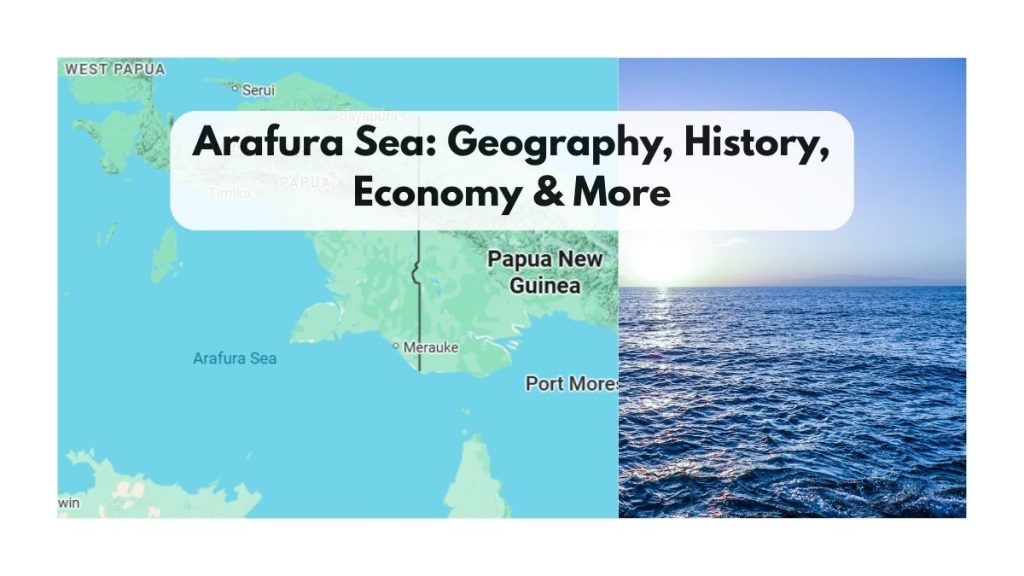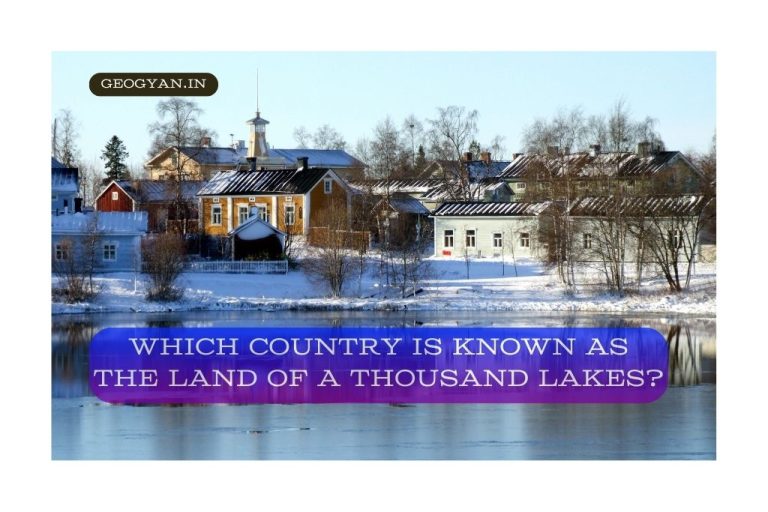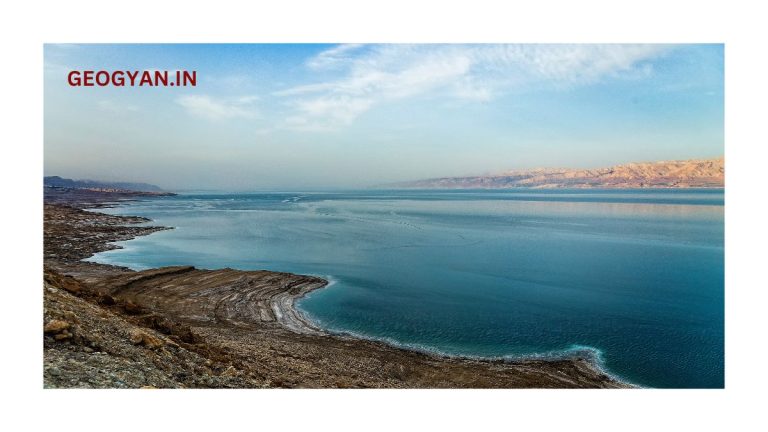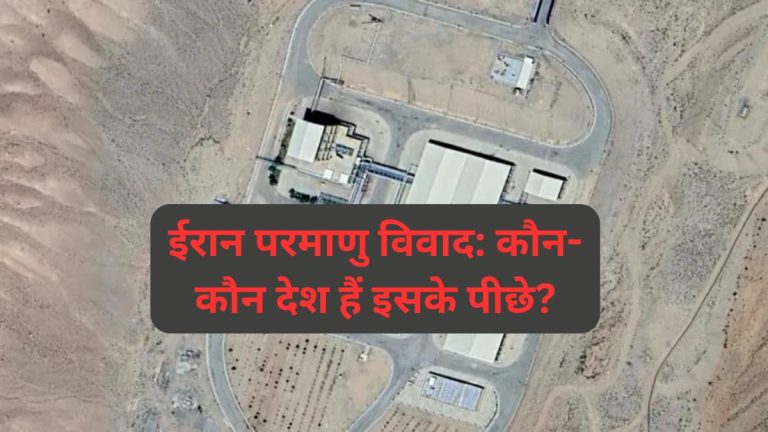The Arafura Sea (click here to see map) is a lesser-known but fascinating water body located between northern Australia and New Guinea. It plays a crucial role in marine biodiversity, trade, and regional history. Despite its relatively shallow waters, the sea holds immense ecological and economic significance, influencing climate patterns, sustaining diverse marine species, and serving as a vital trade route.

Geographic Location and Boundaries of Arafura Sea
The Arafura Sea is strategically positioned between Northern Australia and the island of New Guinea, forming a natural connection between the Pacific Ocean and the Indian Ocean. It is part of the larger Australasian Mediterranean Sea, which includes several marginal seas like the Banda Sea, Timor Sea, and Gulf of Carpentaria.
| Feature | Description |
| Location | Between Northern Australia and New Guinea |
| Length | 1,290 km |
| Width | 560 km |
| Depth | 50 – 80 meters (Shallow) |
| Borders | Timor Sea, Banda Sea, Gulf of Carpentaria |
The Sahul Shelf Connection
The Arafura Sea lies over the Sahul Shelf, a shallow continental shelf that was once part of a land bridge connecting Australia and Papua New Guinea. During the last Ice Age, when sea levels were lower, this region was dry land, allowing early human migration and species dispersal across the continents.
Physical Characteristics of the Sea
- Shallow Waters: The Arafura Sea is relatively shallow, with an average depth of 50-80 meters. This makes it highly productive in terms of marine life.
- Tropical Climate: The region experiences a warm tropical climate, heavily influenced by the monsoon seasons, which affect water currents and marine ecosystems.
- Tidal Movements: The sea’s tidal patterns create unique coastal features, impacting fishing and navigation.
- Coral Reefs and Seagrass Beds: Extensive coral reefs and seagrass meadows provide habitats for many marine species, supporting biodiversity.
Historical Significance of the Arafura Sea
Ancient Trade Routes
For centuries, the Arafura Sea has been a key part of Indonesian-Australian trade networks. Indigenous peoples of northern Australia and the Makassan traders from Indonesia exchanged goods like sea cucumbers (trepang), turtle shells, and pearls. This trade flourished before European explorers arrived in the region.
The Battle of Arafura Sea (1962)
One of the most significant historical events in this region was the Battle of Arafura Sea in 1962. This naval conflict took place between Indonesia and the Netherlands, as part of Indonesia’s efforts to gain control over Western New Guinea. The battle resulted in Indonesian casualties and played a role in the eventual transfer of Western New Guinea to Indonesia.
European Exploration
European explorers, including the Dutch and Portuguese, mapped the Arafura Sea during the 17th century. Their navigation records contributed to the broader understanding of the Australasian region’s marine geography.
Ecological Importance of Arafura
The Arafura Sea is home to a wide variety of marine species, making it an ecological hotspot. Due to its rich biodiversity, the sea is crucial for the survival of many endangered and commercially valuable species.
| Marine Life | Importance |
| Coral Reefs | Supports biodiversity and marine food chains |
| Shrimp | Major economic species, heavily fished for export |
| Fish Species | Tuna, Snapper, Grouper – vital for fisheries |
| Dugongs | Vulnerable species, reliant on seagrass meadows |
| Sea Turtles | Conservation priority due to habitat loss |
Environmental Challenges of the Sea
Despite its ecological significance, the Arafura Sea faces multiple threats:
- Illegal Fishing: Unregulated fishing, especially by foreign vessels, threatens fish populations.
- Climate Change: Rising sea temperatures and coral bleaching impact biodiversity.
- Pollution: Marine debris, plastic waste, and oil spills degrade water quality and habitats.
To address these issues, organizations like the Arafura and Timor Seas Ecosystem Action (ATSEA) Program are working to promote sustainable marine resource management.
Economic Importance of the Arafura Sea
Fisheries
The Arafura Sea is one of the most productive fishing zones in the region. Large-scale commercial fisheries operate here, catching shrimp, tuna, snapper, and other valuable seafood for both domestic consumption and international markets.
Natural Resources
The seabed of the Arafura Sea is believed to hold rich deposits of oil and natural gas. Exploration and extraction efforts have been increasing, bringing both economic benefits and environmental concerns.
Trade and Navigation
Being part of a major shipping and trade route, the Arafura Sea facilitates economic exchanges between Australia, Indonesia, and Southeast Asia.
Cultural Connections
- Indigenous Australian communities have deep cultural and spiritual connections to the sea, relying on it for sustenance and traditional practices.
- The Makassan traders influenced language, customs, and trade practices in coastal communities.
- Several local myths and legends describe the Arafura Sea as a mystical water body, home to spirits and mythical creatures.
Interesting Facts About the Arafura Sea
- Ancient Land Bridge: The sea was once dry land during the Ice Age, allowing humans and animals to migrate between Australia and New Guinea.
- Rare Marine Species: The Arafura Sea is home to unique fish and coral species found nowhere else in the world.
- Meaning of “Arafura”: The origin of the name is unclear, but it is believed to come from the Malay language, meaning “people of the mountains.”
- Monsoon Winds: The sea experiences strong seasonal monsoon winds, making navigation challenging.
Modern Developments in Arafura Sea
- Marine Conservation: International and local initiatives are focusing on marine biodiversity conservation and sustainable fishing.
- Economic Projects: Governments and private companies are exploring the sea’s natural resources while balancing environmental concerns.
- Scientific Research: Oceanographers are studying the sea’s geological history and ecosystem changes to understand climate impacts.
What do you think about the Arafura Sea’s significance? Share your thoughts in the comments below!





























